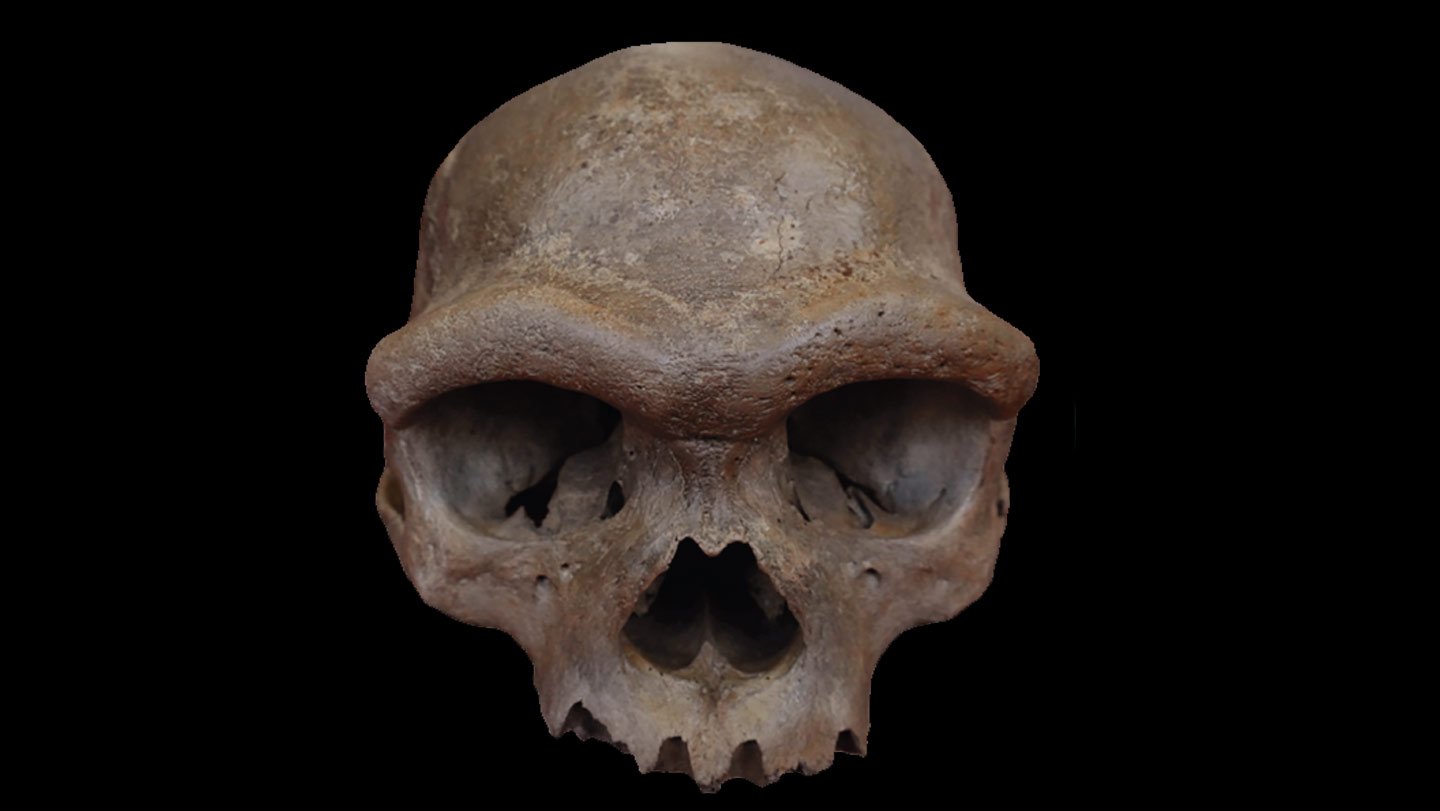Meet the new face, and braincase to boot, of Asia’s mysterious Stone Age denizens, the Denisovans.
The nearly complete, roughly 146,000-year-old skull of an adult male was found nearly a century ago, possibly during bridge construction in Harbin, China. An earlier study claimed that the Harbin skull, nicknamed Dragon Man, represented a new species called Homo longi. Two new studies now argue it is, instead, the first-ever skull from a Denisovan population — although scientists not involved in the new investigations disagree on whether enough evidence exists to confirm Dragon Man’s evolutionary identity.
We summarize the week’s scientific breakthroughs every Thursday.
Researchers initially identified Denisovans in 2012 based on DNA extracted from a fossil finger fragment found in a Siberian cave and classified these Asian hominids as close Neandertal relatives. But scientists could not say what Denisovans looked like based on a partial finger bone. Since then, only a handful of Denisovan fossils have turned up, including a partial lower jaw and a rib.
“This is the first time we have connected a [fossil] cranium to Denisovans,” says evolutionary geneticist Qiaomei Fu of the Institute of Vertebrate Paleontology and Paleoanthropology, or IVPP, in Beijing.
Fu’s group makes a case for having cornered the first Denisovan skull in two ways. Ancient proteins extracted from the Harbin fossil display a molecular makeup that links them to previous examples of Denisovan proteins, the scientists report June 18 in Science.
Analyses of proteins in present-day people and great apes, Neandertals and Denisovans uncovered three protein variants found only in Denisovans. Those variants also appeared in the Harbin skull. Proteins extracted from the Chinese skull that displayed chemical signs of recent contamination, possibly by the burial environment or human handling, were excluded.
In support of the protein findings, mitochondrial DNA obtained from the Chinese skull’s dental tartar closely align with that of several Denisovans from southern Siberia’s Denisova Cave, the investigators conclude June 18 in Cell. Since children typically inherit mitochondrial DNA from the mother, the new genetic evidence suggests that Denisovans with a shared maternal ancestry ranged from Central to East Asia, the researchers say.

Unlike mitochondrial DNA, proteins — which preserve better in fossils than genes do — provide clues to the inheritance of nuclear DNA from both parents. Investigators previously reported having detected Denisovan proteins in a fossil from Central Asia’s Tibetan Plateau dubbed the Xiahe jaw and in another jaw called Penghu 1 found off Taiwan’s coast.
“The extraction of ancient proteins and ancient DNA from the Harbin skull further confirms that Denisovans were widely distributed in Asia during the Middle Pleistocene,” says IVPP paleoanthropologist Xiujie Wu, who did not participate in the new studies. The Middle Pleistocene refers to a pivotal period of Homo evolution that ran from about 789,000 to 130,000 years ago.
Like Wu, paleoanthropologist Yousuke Kaifu of the University of Tokyo sees Dragon Man as part of a Denisovan population that spread over a large swath of Asia. “If we regard Neandertals as a distinct species, then why not Denisovans,” Kaifu says.
But IVPP paleoanthropologist Xijun Ni, who was not part of Fu’s team, is not ready to proclaim the Harbin skull a Denisovan. Researchers need a larger sample of ancient protein variants to determine whether the Chinese find, as well as Taiwan’s Penghu 1 jaw, qualifies as Denisovan, Ni says.
Sponsor Message
For instance, the two protein variants used to classify Penghu 1 as Denisovan may instead come from an ancient Homo sapiens that possibly inherited some Denisovan genes through interbreeding, evolutionary biologists Derek Taylor and Victor Albert, both of the University at Buffalo in New York, wrote in a May 5 eLetter published in Science.
Ni, who led the team that classified the Harbin skull as H. longi, also suspects that Fu’s group studied mitochondrial DNA containing modern contaminants. Tartar on tooth surfaces of the Chinese skull has been touched many times by collectors, researchers and technicians whose DNA got incorporated into the hardened plaque, Ni says.
Despite screening data to reconstruct ancient mitochondrial DNA, “the authors may have actually recovered many DNA fragments from me because I studied and handled the [skull] so many times,” Ni says.
Fu and colleagues failed in attempts to extract DNA from the Harbin skull’s petrous bone, an inner ear bone that preserves genetic material especially well, or from tooth enamel unexposed to human touch.
So for now, Denisovans still retain much of their mystery.
Source link













Leave a Reply